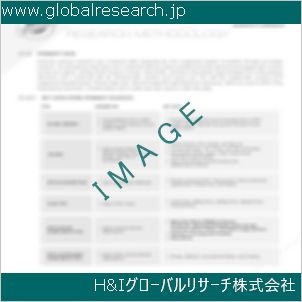Table of Contents
1 Industry Overview of Propionitrile
1.1 Definition and Specifications of Propionitrile
1.1.1 Definition of Propionitrile
1.1.2 Specifications of Propionitrile
1.2 Classification of Propionitrile
1.3 Applications of Propionitrile
1.3.1 Nuclear Application
1.3.2 Non-Nuclear Application
1.4 Industry Chain Structure of Propionitrile
1.5 Industry Overview and Major Regions Status of Propionitrile
1.5.1 Industry Overview of Propionitrile
1.5.2 Global Major Regions Status of Propionitrile
1.6 Industry Policy Analysis of Propionitrile
1.7 Industry News Analysis of Propionitrile
2 Manufacturing Cost Structure Analysis of Propionitrile
2.1 Raw Material Suppliers and Price Analysis of Propionitrile
2.2 Equipment Suppliers and Price Analysis of Propionitrile
2.3 Labor Cost Analysis of Propionitrile
2.4 Other Costs Analysis of Propionitrile
2.5 Manufacturing Cost Structure Analysis of Propionitrile
2.6 Manufacturing Process Analysis of Propionitrile
3 Technical Data and Manufacturing Plants Analysis of Propionitrile
3.1 Capacity and Commercial Production Date of Global Propionitrile Major Manufacturers in 2023
3.2 Manufacturing Plants Distribution of Global Propionitrile Major Manufacturers in 2023
3.3 R&D Status and Technology Source of Global Propionitrile Major Manufacturers in 2023
3.4 Raw Materials Sources Analysis of Global Propionitrile Major Manufacturers in 2023
4 Capacity, Production and Revenue Analysis of Propionitrile by Regions, Types and Manufacturers
4.1 Global Capacity, Production and Revenue of Propionitrile by Regions 2019-2024
4.2 Global and Major Regions Capacity, Production, Revenue and Growth Rate of Propionitrile 2019-2024
4.3 Global Capacity, Production and Revenue of Propionitrile by Types 2019-2024
4.4 Global Capacity, Production and Revenue of Propionitrile by Manufacturers 2019-2024
5 Price, Cost, Gross and Gross Margin Analysis of Propionitrile by Regions, Types and Manufacturers
5.1 Price, Cost, Gross and Gross Margin Analysis of Propionitrile by Regions 2019-2024
5.2 Price, Cost, Gross and Gross Margin Analysis of Propionitrile by Types 2019-2024
5.3 Price, Cost, Gross and Gross Margin Analysis of Propionitrile by Manufacturers 2019-2024
6 Consumption Volume, Consumption Value and Sale Price Analysis of Propionitrile by Regions, Types and Applications
6.1 Global Consumption Volume and Consumption Value of Propionitrile by Regions 2019-2024
6.2 Global and Major Regions Consumption Volume, Consumption Value and Growth Rate of Propionitrile 2019-2024
6.3 Global Consumption Volume and Consumption Value of Propionitrile by Types 2019-2024
6.4 Global Consumption Volume and Consumption Value of Propionitrile by Applications 2019-2024
6.5 Sale Price of Propionitrile by Regions 2019-2024
6.6 Sale Price of Propionitrile by Types 2019-2024
6.7 Sale Price of Propionitrile by Applications 2019-2024
6.8 Market Share Analysis of Propionitrile by Different Sale Price Levels
7 Supply, Import, Export and Consumption Analysis of Propionitrile
7.1 Supply, Consumption and Gap of Propionitrile 2019-2024
7.2 Global Capacity, Production, Price, Cost, Revenue, Supply, Import, Export and Consumption of Propionitrile 2019-2024
7.3 USA Capacity, Production, Price, Cost, Revenue, Supply, Import, Export and Consumption of Propionitrile 2019-2024
7.4 EU Capacity, Production, Price, Cost, Revenue, Supply, Import, Export and Consumption of Propionitrile 2019-2024
7.5 China Capacity, Production, Price, Cost, Revenue, Supply, Import, Export and Consumption of Propionitrile 2019-2024
7.6 Japan Capacity, Production, Price, Cost, Revenue, Supply, Import, Export and Consumption of Propionitrile 2019-2024
8 Major Manufacturers Analysis of Propionitrile
8.1 Manufacturer One
8.1.1 Company Profile
8.1.2 Product Picture and Specifications
8.1.2.1 Type I
8.1.2.2 Type II
8.1.2.3 Type III
8.1.3 Capacity, Production, Price, Cost, Gross and Revenue
8.1.4 Contact Information
8.2 Manufacturer Two
8.2.1 Company Profile
8.2.2 Product Picture and Specifications
8.2.2.1 Type I
8.2.2.2 Type II
8.2.2.3 Type III
8.2.3 Capacity, Production, Price, Cost, Gross and Revenue
8.2.4 Contact Information
8.3 Manufacturer Three
8.3.1 Company Profile
8.3.2 Product Picture and Specifications
8.3.2.1 Type I
8.3.2.2 Type II
8.3.2.3 Type III
8.3.3 Capacity, Production, Price, Cost, Gross and Revenue
8.3.4 Contact Information
8.4 Manufacturer Four
8.4.1 Company Profile
8.4.2 Product Picture and Specifications
8.4.2.1 Type I
8.4.2.2 Type II
8.4.2.3 Type III
8.4.3 Capacity, Production, Price, Cost, Gross and Revenue
8.4.4 Contact Information
8.5 Manufacturer Five
8.5.1 Company Profile
8.5.2 Product Picture and Specifications
8.5.2.1 Type I
8.5.2.2 Type II
8.5.2.3 Type III
8.5.3 Capacity, Production, Price, Cost, Gross and Revenue
8.5.4 Contact Information
…
9 Marketing Trader or Distributor Analysis of Propionitrile
9.1 Marketing Channels Status of Propionitrile
9.2 Traders or Distributors with Contact Information of Propionitrile by Regions
9.3 Ex-work Price, Channel Price and End Buyer Price Analysis of Propionitrile
9.4 Regional Import, Export and Trade Analysis of Propionitrile
10 Industry Chain Analysis of Propionitrile
10.1 Upstream Major Raw Materials Suppliers Analysis of Propionitrile
10.1.1 Major Raw Materials Suppliers with Contact Information Analysis of Propionitrile
10.1.2 Major Raw Materials Suppliers with Supply Volume Analysis of Propionitrile by Regions
10.2 Upstream Major Equipment Suppliers Analysis of Propionitrile
10.2.1 Major Equipment Suppliers with Contact Information Analysis of Propionitrile
10.2.2 Major Equipment Suppliers with Product Pictures Analysis of Propionitrile by Regions
10.3 Downstream Major Consumers Analysis of Propionitrile
10.3.1 Major Consumers with Contact Information Analysis of Propionitrile
10.3.2 Major Consumers with Consumption Volume Analysis of Propionitrile by Regions
10.4 Supply Chain Relationship Analysis of Propionitrile
11 Development Trend of Analysis of Propionitrile
11.1 Capacity, Production and Revenue Forecast of Propionitrile by Regions and Types
11.1.1 Global Capacity, Production and Revenue of Propionitrile by Regions 2024-2029
11.1.2 Global and Major Regions Capacity, Production, Revenue and Growth Rate of Propionitrile 2024-2029
11.1.3 Global Capacity, Production and Revenue of Propionitrile by Types 2024-2029
11.2 Consumption Volume and Consumption Value Forecast of Propionitrile by Regions, Types and Applications
11.2.1 Global Consumption Volume and Consumption Value of Propionitrile by Regions 2024-2029
11.2.2 Global and Major Regions Consumption Volume, Consumption Value and Growth Rate of Propionitrile 2024-2029
11.2.3 Global Consumption Volume and Consumption Value of Propionitrile by Types 2024-2029
11.2.4 Global Consumption Volume and Consumption Value of Propionitrile by Applications 2024-2029
11.3 Supply, Import, Export and Consumption Forecast of Propionitrile
11.3.1 Supply, Consumption and Gap of Propionitrile 2024-2029
11.3.2 Global Capacity, Production, Price, Cost, Revenue, Supply, Import, Export and Consumption of Propionitrile 2024-2029
11.3.3 USA Capacity, Production, Price, Cost, Revenue, Supply, Import, Export and Consumption of Propionitrile 2024-2029
11.3.4 EU Capacity, Production, Price, Cost, Revenue, Supply, Import, Export and Consumption of Propionitrile 2024-2029
11.3.5 China Capacity, Production, Price, Cost, Revenue, Supply, Import, Export and Consumption of Propionitrile 2024-2029
11.3.6 Japan Capacity, Production, Price, Cost, Revenue, Supply, Import, Export and Consumption of Propionitrile 2024-2029
12 New Project Investment Feasibility Analysis of Propionitrile
12.1 New Project SWOT Analysis of Propionitrile
12.2 New Project Investment Feasibility Analysis of Propionitrile
13 Conclusion of the Global Propionitrile (CAS 107-12-0) Industry 2024 Market Research Report
| ※参考情報 シアン化エチル、またはプロピオニトリル(CAS番号107-12-0)は、化学式C3H5Nで表される有機化合物です。これは、炭素、水素、窒素から構成される単純なニトリル化合物であり、化学的に重要な役割を果たしています。この化合物は、主に工業用化学製品の前駆体や中間体として使用されており、その特性や用途は非常に多岐にわたります。 シアン化エチルの化学的特徴として、まずその分子構造を挙げることができます。C3H5Nの分子式を持つこの化合物は、プロピル基(-C3H7)の末端にシアノ基(-CN)が結合している構造です。このため、シアン化エチルは極性溶媒であり、さまざまな有機化合物と相互作用する能力があります。また、その特性から、反応性が高く、化学合成において重要な役割を果たす中間体として機能します。 シアン化エチルは、主に合成化学の分野で利用されています。特に、医薬品や農薬の製造においてシアン化エチルが中間体として利用されるケースが多く報告されています。例えば、シアン化エチルは、アミノ酸、アルカロイド、あるいは特定の医薬品の合成において原料となることがあります。さらに、シアン化エチルは、様々な有機反応(例えば、加水分解、酸化反応など)においても重要な役割を果たします。 シアン化エチルを含む化合物の特性により、さまざまな用途があることも特徴です。例えば、工業用の溶媒として利用されることや、その他の化学物質と反応させることで新しい化合物を生成するための前駆体として活用されます。また、プラスチックや繊維、コーティング材の製造においても、シアン化エチルはそのユニークな性質から重要な役割を果たします。 一方で、シアン化エチルはその特性上、取り扱いには注意が必要な物質でもあります。シアン化エチルは毒性があり、吸入や皮膚接触によって健康に悪影響を及ぼす可能性があります。したがって、取り扱う際には適切な安全対策が求められます。例えば、作業環境では換気を徹底し、必要な保護具(手袋、マスクなど)を身につけることが重要です。また、万が一の際に備えて、適切な応急処置や処理手順を周知しておくことも必要です。 加えて、シアン化エチルは環境にも影響を与える可能性があるため、廃棄や排出に関する規制が厳しく、環境保護への配慮も求められます。このような理由から、シアン化エチルを使用する際には、法律や規制を遵守することが重要です。 シアン化エチルの関連技術としては、合成法や反応条件に関する研究が進められています。新しい合成法や効率的な反応経路の開発により、シアン化エチルの生産コストを削減できる可能性があります。また、シアン化エチルを使用した新しい機能性材料の開発や、既存の材料の改良に関する研究も活発に行われています。 最後に、シアン化エチルの今後の展望について言及することが重要です。持続可能な化学プロセスや新型の触媒技術の進展により、シアン化エチルの利用範囲は今後さらに広がる可能性があります。特に、グリーンケミストリーの観点から、環境に配慮した方法でのシアン化エチルの製造や応用が期待されています。このように、シアン化エチルは化学産業においてかなり重要な位置を占めており、その研究と応用は今後も進展していくことでしょう。 |
❖ 免責事項 ❖
http://www.globalresearch.jp/disclaimer

-gr.jpg)










